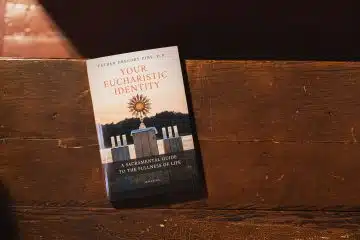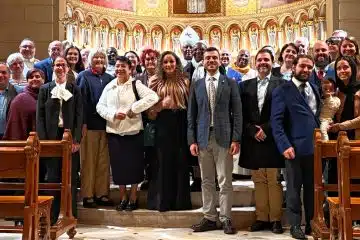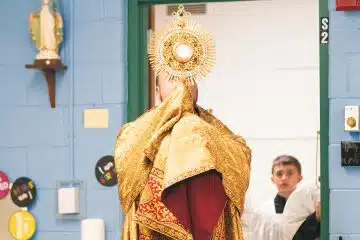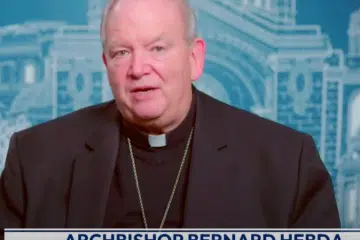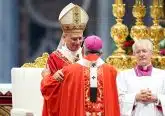The Catholic Moment: What is the magisterium?
Thursday, June 17, 2010
By Father Earl Fernandes
At the kickoff for the Athenaeum’s capital campaign, a benefactor said, “Father, we enjoyed your last article (‘Magisterium: Always Right?’) in The Catholic Telegraph. I only have one question: What’s the magisterium?”
The Catechism of the Catholic Church (85) states: “The task of giving an authentic interpretation of the word of God, whether in its written form or in the form of tradition, has been entrusted to the living, teaching office of the church alone. Its authority in this matter is exercised in the name of Jesus Christ.”
The term “magisterium” refers to the teaching office of the church, which has been entrusted to the pope and to the bishops in communion with him. They are the authentic interpreters of the Scriptures and tradition. Jesus says, “He who hears you, hears me” (Luke 10:16). Vatican II (Dei Verbum, 10) reminds us: “Yet this magisterium is not superior to the word of God, but is its servant.” The magisterium guides and forms the consciences of the Christian faithful as it teaches with authority.
In the early church, we find bishops exercising teaching authority. Great figures like St. Augustine and St. John Chrystostom taught with authority and were able to teach, delight and persuade with their arguments. They were bishops and good theologians. In the medieval period, this was not always the case. St. Thomas Aquinas distinguished two kinds of teaching: the teaching of the pastoral chair (magisterium cathedrae pastoralis) and the teaching of the masters’ chair (magisterium cathedrae magistralis), which referred to the teaching of theologians.
With respect to the teaching authority of the church’s magisterium, many overlook, or even resent, the pastoral chair, viewing the exercise of authority as “bullying” rather than serving. On June 29, the feast of Saints Peter and Paul, Archbishop Dennis Schnurr and other metropolitan archbishops will receive the pallium from the pontiff. The pallium is a liturgical vestment, woven of white lamb’s wool from sheep blessed by the pope.
The pallium is a reminder of the pastoral chair. The pallium is worn over the shoulders and is a symbol of the gentle yoke of Christ. The lamb’s wool of the pallium represents the lost, sick, or weak sheep whom the shepherd places on his shoulders and carries to the waters of life. The bishop who teaches what Christ taught leads those who have lost sight of the truth, who have grown sick through sin and false teaching and who have grown weak by being fed stones rather than bread, the path to life. Christ is not indifferent to His flock amid the false teaching of “wolves in sheep’s clothing.” Unlike shepherds who lead the sheep to the slaughter, Christ, the Good Shepherd, became a lamb, standing with the downtrodden with His prophetic voice and His challenging and authoritative teaching.
Christ’s love for His flock led Him to call the apostles to himself and to give them authority to preach and teach in His name. Our bishops today are successors to the apostles. It is Christ who established this hierarchy within His church for the worship of God and the care of God’s flock. The teaching of the magisterium, like that of Christ, does not seek to dominate and control but to lead us to life.
Is this teaching challenging at times? Of course, but without it, would we find the “waters of life” or be lost in the “desert?” Today some immediately view magisterial teaching with skepticism, voicing the opinion that it is oppressive. A better disposition might be to listen for the voice of the Good Shepherd in the teaching.
Father Fernandes is an assistant professor of moral theology and dean of Mount St. Mary’s Seminary.




